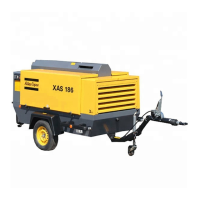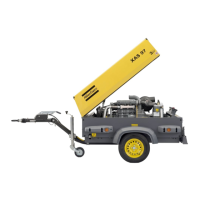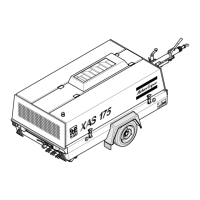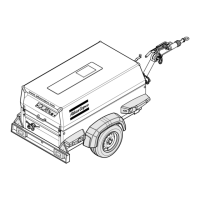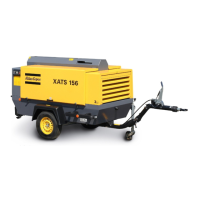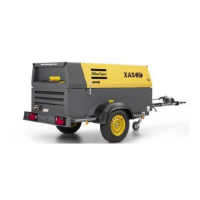+05647%6+10/#07#.
27
241$.'/51.8+0)
It is assumed that the engine is in good condition and that there is
adequate fuel flow to the filter and injection equipment.
Make sure that the wires are not damaged and that they are clamped
tight to their terminals.
#
.6'40#614
24'%#76+105
1. Never reverse the polarity of the battery or the alternator.
2. Never break any alternator or battery connections while the
engine is running.
3. When recharging the battery, disconnect it from the alternator.
Before using booster cables to start the engine, be sure of the
polarity and connect the batteries correctly.
4. Never operate the engine without the main or voltage sensing
cables connected in the circuit.
Note:
For correct functioning of the module, the dip switches at the back of the moduleshould be positioned as follows:
Fig. 6.1 Dip switches
$QHOHFWULFDOIDXOWPXVWEHWUDFHGE\DQHOHFWULFLDQ
3UREOHP 3RVVLEOHIDXOWV &RUUHFWLYHDFWLRQV
1. Lamps (H1, H2 and H3) do
not light up when switching
(S) to ”I”. (Preheat lamp H2
only when cold start option
is installed)
a. Discharged or defective battery.
b. Loose battery cable(s) or oxidised terminals.
c. Loose connection or damaged wiring.
d. Start button (S) defective.
e. Circuit breaker defective.
f. Lamps blown.
a. Check electrolyte level and charge battery.
If no cells are shorted and battery is
discharged, trace cause and correct.
b. Check and correct if necessary.
c. Check wiring and connections; correct if
necessary.
d. With (S) switched in ”I”, check voltage
between earth and the starter output SMS
(X 1:7) (Fig. 2.4, N4). Voltage must register
approx. 12V. Check for loose connections.
Replace control module if necessary. See
note.
e. Replace circuit breaker.
f. Replace lamps.
2. Starter motor does not crank
engine after switching
startbutton (S) to ” ”.
a. Low battery output.
b. Start button (S) button defective.
c. Alternator output relay (K5) defective.
d. Starter solenoid (K0) or starter motor defective.
a. See corrective action 1a.
b. See corrective action 1d.
c. Replace relay (K5).
d. Check starter solenoid (K0). Have starter
motor repaired.
3. Starter motor cranks engine
when switching start button
(S) to ” ”, but engine
does not fire.
a. Start button (S) defective.
b. Fuel stop solenoid (Y1) defective.
c. Low battery output.
a. See corrective action 1d.
b. Check solenoid and its valve, correct or
replace if necessary.
c. See corrective action 1a.
4. Engine fires, but engine
stops when releasing start
button (S).
a. Alternator drive belt broken or slipping.
b. Alternator/regulator defective.
a. Check and correct if necessary.
b. Have assembly repaired.
Standard (no coldstart):
With coldstart option:
Not used
Preheat-Coldstart
Low coolant level
Low fuel
Not used
Preheat-Coldstart
Low coolant level
Low fuel
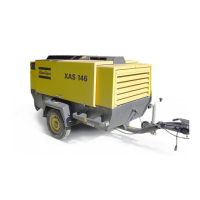
